Do-it-yourself well cleaning: a review of common clogging causes and best cleaning methods
One fine day, you found that the well is not able to work in the usual mode? It’s a pity that there are no “eternal” sources for water supply, is it? You suspect that its mechanical clogging has occurred over time and want to fix the problem on your own, but don’t know where to start and which option to choose?
We will help you cope with the problem and stop at the best option. Let’s show you what other methods of self-cleaning exist - the article discusses the best methods applicable at home, both to eliminate blockage in an equipped well, and in production.
After all, troubles can lie in wait at the drilling stage. Until the casing (working string) is installed, the soil may collapse into the mine, clogging it.
And also we picked up photographs that demonstrate the procedure and tools for self-cleaning. For clarity, expert video recommendations are attached - therefore, do-it-yourself cleaning of the well will be your strength.
The content of the article:
How to prevent well clogging?
"Eternal" water supply wells can not be. Unfortunately, sooner or later, the owner of an individual source of water will run into problems. It’s bad if the aquifer has dried up, you have to drill again or deepen the existing mine. It is complicated and very expensive.
It is a different matter if a well becomes clogged - it is easier and cheaper to prevent it than to “treat” it.
A longer source life is supported by several operating rules:
- Strictly adhere to the selected drilling technology. Carefully monitor the tightness of the casing and the integrity of the filter.
- Flush the source immediately after drilling. until clear water appears.
- Protect the well from surface water and contamination, installing a caisson, tip. As a temporary solution, simply seal the top of the casing.
- Before operating, correctly select and install a submersible pump at the required height, necessarily taking into account the flow rate of the well.
- It is advisable not to use a vibrating pump for water supply. Vibrating in the casing, it, depending on the type of soil, to a greater or lesser extent provokes the penetration of sand into the well or contributes to siltation of the adjacent soil. You can use a cheap and simple vibrator for a short time, for constant work you need centrifugal pump.
- The well should not stand idle without analysis of water. An ideal mode of operation is the daily pumping of several tens or hundreds of liters of water. It is provided if people constantly live in the house. If this is not possible, at least 100 liters of water should be pumped out of the well regularly, at least once every 2 months.
The implementation of these recommendations, of course, will not allow to avoid clogging of the well in the future. However, it will postpone this nuisance, providing the maximum possible resource for effective operation for a given source.
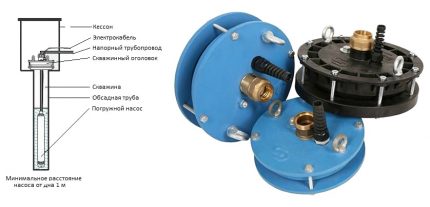
Possible causes of clogging
It is worth mentioning the types of clogging of wells, this will help to identify the causes of problems and determine how to properly do it yourself.
No. 1 - penetration of sand into the casing
“Sanding” is a problem encountered in shallow sand wells where the aquifer is located in a sand and gravel layer. In a well-designed well, sand penetrates into the casing in a small amount.
If the source’s productivity decreases and grains of sand appear in the water, one of the following occurs:
- Sand penetrates from the surface - the head is not sealed, caisson.
- The filter is irrationally selected, the cells are too large.
- Filter integrity broken.
- The tightness between the sections of the casing is broken. The thread is not tightened to the end, welding is poorly performed, corrosion has “eaten through” a hole in the steel casing, mechanical damage to the plastic.
It is not possible to eliminate leaks that appear inside the well. Small sand constantly breaks through the filter, but it’s easier to remove it, partially it is washed out when the water rises.
Worse, if coarse sand enters the well, the source may “float” over time. That is why special attention should be paid to the quality of installation. casing elements and filter selection.
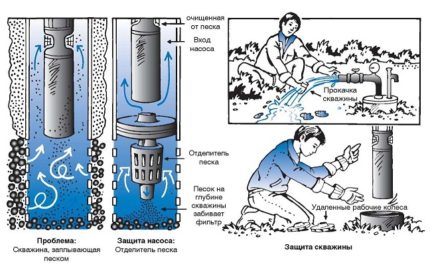
No. 2 - siltation of an unexploited well
Over time, tiny particles of clay, rust, calcium deposits, and sedimentary rocks accumulate in the soil in the filter zone.
When their number becomes too large, the pores in the aquifer and the cells of the mesh (hole, slot) filter become clogged, it becomes more difficult for water to penetrate through the working shaft.
The flow rate of the well falls, its "siltation" occurs until the complete disappearance of water. In a regularly used source, the process is slow, stretching for decades. Without regular pumping, a well can become silty in a year or two.
If the well is cleaned of sludge in a timely manner, without waiting until it is completely dry, it is likely to give the source a "second life". Water will be supplied in sufficient volume for the water supply of a private house.
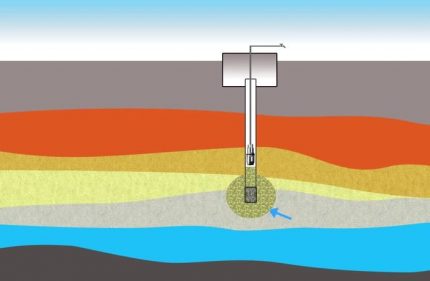
Methods for self-cleaning wells
How to independently clean the well in which sanding or siltation has occurred?
There are three cleaning principles: bleed, rinse with circulating liquid or blow with compressed air. The applied cleaning methods based on the above principles are more:
Method # 1 - Vibration Pumping
Not always an effective, but very simple way to restore well productivity - pumping with a vibration pump.
A vibrator, which is not recommended for a long time during operation of the source, when cleaning from sand, is just better than a circulation pump.
Mainly due to undemanding water quality. It more easily tolerates the pollution of the pumped liquid by sand, “swallows” even small stones.
An abrasive can quickly disable the check valve, but the part is cheap and you can replace it yourself in a few minutes.
The vibration pump costs several times less than the productive, but more sensitive to the abrasive circulation pump. Even if the vibration pump “burns out” during extreme pumping, financial damage will not be so great.
Suitable pumps for pumping a well: The trickle, "Kid".
Cleaning the well by pumping it with a vibration pump will not help to cope with serious siltation of the soil, but it can remove a large amount of sand that has penetrated the casing.
True, provided that the well is shallow. When lifting more than 30-50 m, the performance of the vibrating pump decreases markedly depending on the model. Please note: only a pump with a lower water intake is suitable for us.
In order for the vibrator to actively suck in contaminants, it should be lowered almost onto sandy deposits, raising only a few centimeters above the bottom. As the sand is removed, its level will decrease, and the pump must also be lowered.
The time of continuous operation should not exceed half an hour; periodically, the pump should be turned off for 10-15 minutes to allow it to cool.
If the sand contains pebbles exceeding 3-5 mm in diameter, they will be knocked under the membrane, obstructing the flow of water. The membrane can only be released by lifting the pump to the surface.
The method of cleaning with a vibrating pump is not always effective and quite long. But it is simple and almost does not require physical participation of a person.

Method # 2 - psurface flushing
It is possible to effectively remove fine sand, rust and dregs from the casing by supplying water to the well from the surface.
In order not to turn the site into a swamp, it is better to organize washing in a closed cycle. Especially if there is no source of clean water nearby (we do not recommend flushing the source with water from an open reservoir).
To do this, stock up with tanks containing a volume of fluid equal to the full (from bottom to top) casing capacity.
Flushing fluid will circulate between the well and the reservoir using a pump. Contamination will accumulate at the bottom of the tank, they will periodically have to be removed. A powerful pump is required; chemical reagents can be added to the solution.
For example, phosphoric acid, which dissolves deposits of rust and calcium deposits.
Do not forget that the acid is quenched with baking soda, and after applying the chemicals, the restored well should be pumped for at least 6 hours.
Instead of the head, a nozzle should be installed at the wellhead to direct the backwash into the reservoir. It is possible to flush not in a closed cycle, pumping water into the well from a neighboring water supply.
In this case, there is no need to "bother" with the tanks, but you should provide a drain for dirty water and make sure that it does not fall back into the casing.
Water is fed down with a hose, the length of which should be enough so that it lies directly at the bottom. The surface wash method cleans the filter quite effectively.
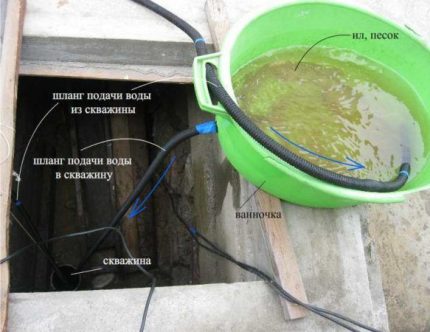
Method # 3 - flushing a well with two pumps
It is problematic to flush a deep (over 50 m) well with a vibration pump or supplying water from the surface.
The power of the vibrator is not enough, and when fed from above, a significant part of the contaminants will not be able to overcome a significant thickness of the water and will again sink to the bottom.
It is possible to significantly increase the washing efficiency by using two pumps for this.
The second cleaning option involves the use of two different types of units: surface and deep pump.
The first pump, located above, delivers flushing fluid to the bottom of the well, raising pollution. The second, submersible centrifugal, pumps water with sand and silt to the surface.
To extract contaminants, you can use the pump that is installed in the well, you will not have to either remove it or even lower it below the suspension point.
The main thing is to lower the water supply hose to the very bottom, passing it in a narrow casing next to the submersible pump. It must be understood that if there is sand and small stones in the water, the pump will undergo increased wear.
Method # 4 - sand extraction using a chipper
The method of cleaning the well from sand with the help of the chute is very effective for removing from the casing a large amount of sand, pebbles and compacted deposits of fine fractions.
However, it is almost useless if you need to clean the filter and the soil adjacent to it from sludge.Zhelonka - a piece of steel pipe with a length of one and a half meters with a valve on one side and a lever-eye for a cable on the other. The design is quite simple - make a bouncer do it yourself.
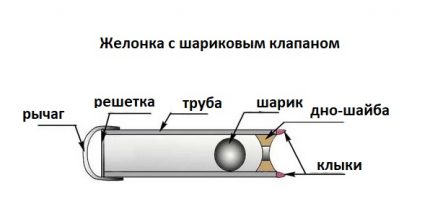
The valve is a heavy steel ball held by a washer that is mounted on a threaded connection.
It is advisable to pump out water from the casing completely. The flap is sharply lowered to the bottom of the well. The valve, crashing into the sand, opens and a certain amount of sand enters the bailer.
The projectile is raised to the surface, the contaminations are shaken out. The process is repeated several times. You can use the bailer manually, but it’s hard, even for two. Lower-raise the weighty shell and steel cable more conveniently using a tripod with a block or a winch.
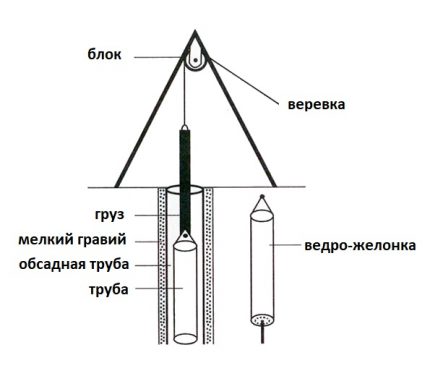
You can buy a flap of the desired diameter at a specialized company, rent it, or make it yourself. In the process of working with the projectile, caution should be exercised when approaching the filter: there is a possibility of damage to the fine mesh.
The last centimeters of contamination closer to the bottom should be removed using another method, where there are no impacts.
Method # 5 - ywater hammer contamination removal
The water hammer method is effective in removing silty sediments from the filter and the soil adjacent to it.
If the sand was scooped out of the casing (or it was not there), and after a long pumping or flushing, the water still does not enter the well in sufficient quantities, a strong siltation of the soil probably occurred. A mud cork formed.
In most cases, it is possible to clean the well with your own hands using the hydropercussion method, "swinging" the cork.
To do this, you need to make a simple projectile: a heavy pipe with a diameter slightly smaller than the casing, so that it fits inside with a small gap. The butt end of the projectile must be tightly welded, and the eyes for fastening the cable are placed on the opposite end.
The well should be filled with water for several meters. It makes sense to add phosphoric acid to the water: it will dissolve calcium deposits and help get rid of rust flakes. The projectile is dropped sharply down into the water. Raise, dump again.
Having equipped it for a couple of hours, the casing is filled with liquid to the top, then pumped or washed. If the desired result is not achieved, the process is repeated.
Often dozens of such cycles have to be carried out in order to sufficiently remove silty and calcium deposits.
Method # 6 - pair-gas flushing
Well cleaning is carried out using a gas-air mixture (sparging).
Compressed air is constantly supplied to the bottom of the well through a sprayer located in the thickness of sand and silt (you need to try to stick it there literally), using a powerful compressor. Bubbles, rising to the surface, carry pollution.
To ensure the outflow of dirty water from the well, it is constantly necessary to add flushing fluid to it. This can be done either with a pump or manually.
You can organize the circulation of water in a vicious circle between the well and a pre-prepared container.
The combined flushing method with simultaneous blowing with compressed air is not particularly productive. Cleaning is slow, the process can take several days, or even weeks, if the pollution is strong.
However, bubbling has certain advantages over alternative technologies, and in some cases it is the only reliable way to clean the well and filter from sand and silt, if pumping with water does not give the desired result.
Alternative, very effective methods of removing sand by mechanical action (choke) and silt sediment with a water hammer create serious vibrations that can damage the filter if it is made of a thin mesh.
The likelihood of destroying or provoking a “collapse” of fragile plastic and even worn out steel casing is even higher. This can completely disable the water supply.
At the same time, flushing and purging with a gas-air mixture is the most gentle technology, it will not cause any damage to the well.
How to choose the cleaning option?
Determining exactly why a well’s production rate has fallen is difficult even for a specialist. Typically, pollution is complex. If the pump “drove” sand with water, this does not mean that the soil is not silted.
When cleaning a well with your own hands, be patient. You may have to apply several methods sequentially and how to try hard before you get a satisfactory result.
We recommend starting with the simplest: pumping the vibrating pump. If pumping did not help, proceed to flushing. We start with the flushing if the source is almost exhausted. To scoop out sand, if there is a lot of it at the bottom, the bailer will help.
But it can not be used for plastic casing, only for steel. For polymer trunks we use only bubbling. If there is no sand or water in the steel casing, we proceed to the hydroblow technology.
This, of course, if the aquifer itself has not dried up. Renting a washing machine, of course, flies into a penny, but the cleaning efficiency is much higher than when using artisanal methods.
Conclusions and useful video on the topic
In conclusion - a useful video in which the available technique for washing a clogged well is shown step by step:
Note that cleaning the well from sand and sludge can be very difficult. And it is not a fact that it will be possible to do this on their own. And carelessly wielding mechanical shells, you can generally cause significant damage to the water source.
At the same time, there is a special technique that is very effective and largely restores the characteristics of the wells.
Do you have personal experience cleaning a well on a site? Want to share effective methods or ask questions about the topic? Please leave comments - the feedback form is located below.

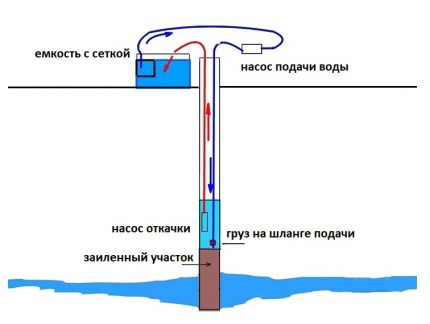
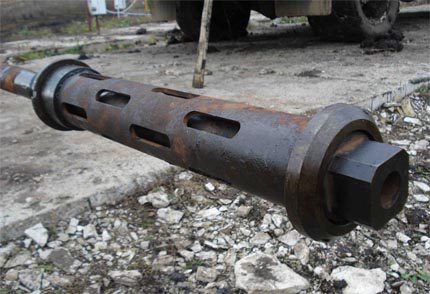
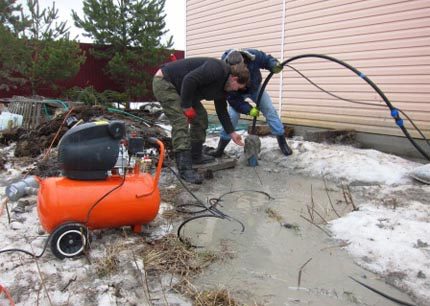
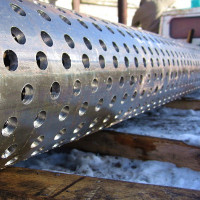 How to make a do-it-yourself filter for a well: an overview of the best home-made options
How to make a do-it-yourself filter for a well: an overview of the best home-made options 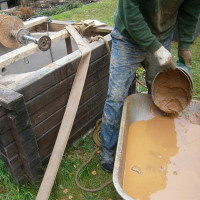 Do-it-yourself well cleaning: a review of the best preventative and capital methods
Do-it-yourself well cleaning: a review of the best preventative and capital methods 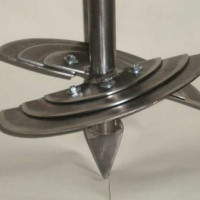 How to make a drill for a well with your own hands: the best homemade schemes
How to make a drill for a well with your own hands: the best homemade schemes 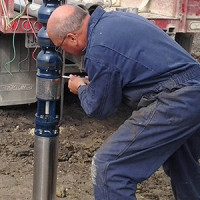 Self-repair of a well: an overview of the best methods of restoration and resuscitation
Self-repair of a well: an overview of the best methods of restoration and resuscitation 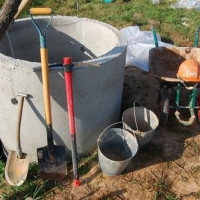 Do-it-yourself deepening of the well: a review of the best methods to get to the aquifer
Do-it-yourself deepening of the well: a review of the best methods to get to the aquifer  Do-it-yourself flushing of the well after drilling: step-by-step briefing on the work
Do-it-yourself flushing of the well after drilling: step-by-step briefing on the work  How much does it cost to connect gas to a private house: the price of organizing gas supply
How much does it cost to connect gas to a private house: the price of organizing gas supply  The best washing machines with dryer: model rating and customer tips
The best washing machines with dryer: model rating and customer tips  What is the color temperature of light and the nuances of choosing the temperature of the lamps to suit your needs
What is the color temperature of light and the nuances of choosing the temperature of the lamps to suit your needs  Replacement of a geyser in an apartment: replacement paperwork + basic norms and requirements
Replacement of a geyser in an apartment: replacement paperwork + basic norms and requirements
These recommendations are more suitable for well owners on sand with a depth of meters up to 18. I also had a problem cleaning the well, and I myself could not solve it, since it was in my limestone and was 44 meters deep. I had to call a professional team, which arrived not only at the rig, but there was also a tank. Washed, cleaned, now I have wonderful water!
The most effective method of cleaning wells is a water hammer, no baits and pumps will help, they just "quietly smoke on the sidelines." Moreover, it is worth noting that before proceeding with direct impacts, it is necessary to pre-pour in the well, preferably special acids, intended for cleaning. But on the other hand, it’s my fault, I launched my well to such a state, the neighbor over there easily cleaned the vibrating pump.